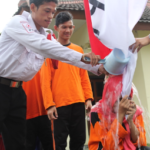Chagarass disease, often referred to as a “silent killer,” is a tropical parasitic disease caused by the protozoan Trypanosoma cruzi and transmitted primarily through the bite of triatomine bugs, also known as “kissing bugs.” Despite affecting millions of people worldwide, Chagaras disease remains underreported and lesser known than other parasitic diseases. Today, we’ll examine everything you need to know about Chagaras, from its causes and symptoms to prevention strategies and treatment options.
What Causes Chagaras Disease?
Chagaras disease is caused by the parasite Trypanosoma cruzi, which enters the body via the feces of infected triatomine insects. These bugs, widely called “kissing bugs” because they bite human faces, are commonly found in Central and South America but have expanded to parts of North America in recent years.
When an infected bug bites, it doesn’t directly transmit the parasite through its saliva. Instead, the parasite enters the body through tiny breaks in the skin or mucous membranes, typically when a person inadvertently rubs or scratches bug feces into the bite wound or an eye.
Other Modes of Transmission
While triatomine bugs are the primary culprits in spreading Trypanosoma cruzi, there are other ways people can contract Chagaras disease:
- Contaminated food or drinks exposed to insect feces.
- Blood transfusions or organ transplants from infected donors.
- Mother-to-child transmission during pregnancy (congenital transmission).
- Laboratory accidents, though rare.
Symptoms of Chagaras Disease
Acute Phase
The initial acute phase lasts for a few weeks to a few months after infection. Symptoms, if they occur, are often mild and unspecific, which is why cases of acute Chagaras frequently go unnoticed. Some common signs include:
- Fever
- Fatigue
- Body aches
- Swollen lymph nodes
- Swelling at the site of the bite (called “chagoma”)
- Romana’s sign (swelling of an eyelid caused by the bug bite near the eye)
If untreated, the acute phase typically transitions to the chronic phase, which is where the real risks unfold.
Chronic Phase
The chronic phase of Chagaras disease can last for years, or even decades, without showing any symptoms. However, approximately 20–30% of untreated people eventually develop severe complications, particularly involving:
- The Heart: Heart rhythm problems, congestive heart failure, or an enlarged heart (cardiomyopathy).
- The Digestive System: Enlargement of the esophagus (mega esophagus) or colon (megacolon), leading to difficulties in swallowing or severe constipation.
- The Nervous System: Rare neurological complications that impact motor and sensory functions.
How Serious Is Chagaras Disease?
Chagares affects 6–7 million individuals worldwide, with the majority of cases diagnosed in endemic regions of Latin America. Once considered a disease confined to rural areas with poor housing conditions, Chagares is now a global health concern. Globalization, increased travel, and migration have led to cases being reported in countries like the United States, Spain, and Japan.
Economic and Social Burden
For those affected, the disease doesn’t just create a health crisis it becomes a socio-economic issue. Untreated Chagares can drastically affect quality of life, increase medical costs, and reduce workforce participation due to long-term health complications.
At-Risk Populations
While anyone exposed to the parasite can be affected, the following groups are particularly vulnerable:
- People living in rural, poverty-stricken regions with inadequate housing.
- Members of communities with poor access to healthcare services.
- Pregnant women, whose infection poses serious risks to their unborn children?
Diagnosis and Treatment of Chagares Disease
How Is It Diagnosed?
A combination of blood tests is typically used for diagnosis, including tests that detect:
- Presence of Trypanosoma cruzi antibodies (indicating infection).
- Parasites circulating in the bloodstream (common in the acute phase).
Early detection provides an opportunity to mitigate symptoms and potentially cure the disease before complications arise.
Treatment Options
While Chagares is challenging to manage in its chronic stage, early intervention can make a difference. The two primary treatments are:
Antiparasitic Medication (Benznidazole and Nifurtimox): These drugs are most effective when given during the acute phase but May still provide benefits if administered in early chronic cases.
Symptom Management: Chronic Chagarass-related complications, like heart failure or digestive enlargement, require targeted management, such as pacemakers or surgery.
Prevention Strategies
Preventing Chagares largely depends on reducing exposure to triatomine bugs in regions where they are common. Here’s how you can protect yourself:
Improve Housing Conditions
Since triatomine bugs often live in cracks in poorly constructed walls or roofs, sealing these gaps or replacing thatch or mud brick walls with plaster can significantly reduce risks.
Use Bed Nets and Screened Windows
Installing window or door screens and utilizing insecticide-treated bed nets will help keep bugs at bay.
Bug-Proof Cooking and Storage
Store food and beverages in sealed containers, especially in areas with a high prevalence of the disease.
Blood Banks and Screening Measures
With modern healthcare protocols, blood donations and organ transplants are tested for Trypanosoma cruzi. If you’re in a high-risk region, inquire about these measures.
Education and Public Awareness
Community education plays a key role in preventing the spread of Chagares. By understanding symptoms and transmission methods, individuals can take proactive steps to protect themselves and seek treatment promptly.
Global Efforts to Combat Chagares Disease
Organizations like the World Health Organization (WHO) and Pan American Health Organization (PAHO) have implemented long-term strategies to reduce global cases of Chagares. Public health campaigns include insecticide-spraying initiatives, better disease surveillance, and accessible diagnostic testing.
Additionally, researchers are actively seeking vaccines and more effective drug options for lifelong disease management and, hopefully, eradication.
What’s Next? Protect Yourself with Awareness
While significant strides have been made globally to control Chagares’ impact, awareness and early action remain critical. Whether you’re in an endemic region or a country where imported cases arise, staying informed is your first line of defense.
If you live in a region at risk or have been exposed to triatomine bugs, consult a healthcare provider for screenings. The earlier Chagares’s disease is caught, the better its prognosis even though long-term complications can sound daunting.
Chagaras might be a “silent killer,” but through research, actionable prevention, and advanced treatments, we can reduce its global impact.





